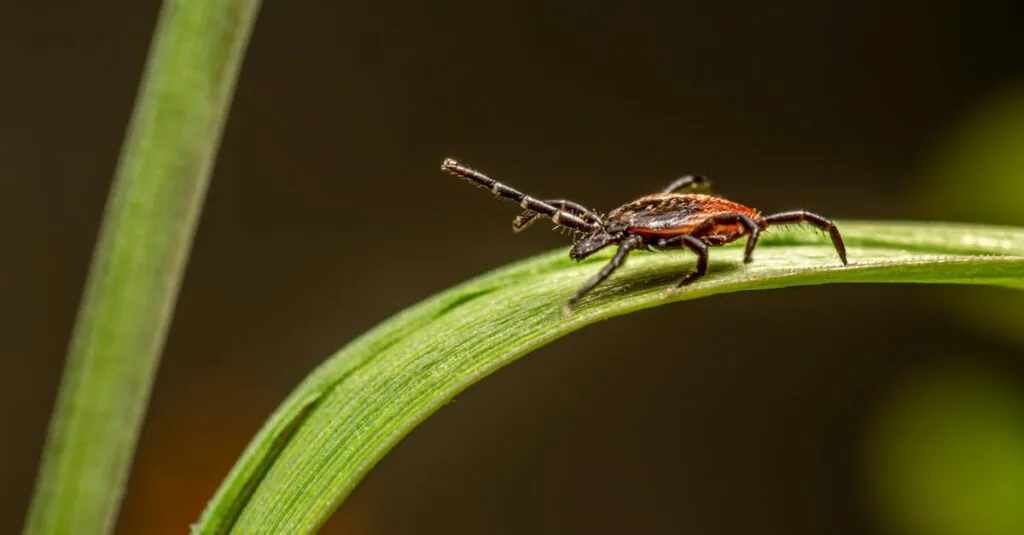Table of Contents
ToggleTicks might be tiny, but they pack a punch when it comes to pesky problems. These bloodsuckers don’t just ruin a good hike; they can also bring along some serious health risks. If you’ve ever found one of these little vampires clinging to your skin, you know it’s time to take action. Fortunately, tick pest control isn’t just a chore—it’s a necessity for anyone who values their outdoor adventures.
Overview of Tick Pest Control
Tick pest control consists of multiple strategies that minimize tick populations and reduce exposure to tick-borne diseases. Effective approaches include both preventive measures and responsive actions. Maintaining a clean yard by regularly mowing grass and clearing debris helps deter ticks from thriving in the environment.
Using barriers, such as wood chips or gravel, creates zones that prevent ticks from migrating into recreational areas. Additionally, applying acaricides provides a targeted method for reducing tick numbers in gardens and lawns. Experts recommend treating these areas at least twice a year for optimal results.
Utilizing personal protective measures plays a crucial role in safeguarding health. Wearing long sleeves and pants while outdoors decreases the likelihood of tick bites. Furthermore, applying permethrin-treated clothing enhances protection against these pests.
Regularly inspecting pets for ticks after outdoor activities is essential. Dogs and cats can carry ticks inside, leading to infestations in living spaces. Effective tick control for pets involves using veterinarian-recommended tick prevention products such as collars and topical treatments.
Public awareness campaigns promote understanding of tick behavior and habitats. Educating communities about tick habitats encourages responsible outdoor practices. Knowledge about tick removal techniques also empowers individuals to act promptly when faced with a bite.
Incorporating integrated pest management (IPM) principles can lead to sustainable tick control solutions. Combining biology, environmental knowledge and chemical treatments ensures a comprehensive approach. This method focuses on long-term tick population management rather than temporary fixes.
Implementing these strategies collectively enhances outdoor experiences while minimizing health risks associated with ticks.
Common Tick Species
Ticks represent various species, each with unique characteristics and health implications. Understanding these species is crucial for effective pest control.
Identification of Ticks
Identifying ticks involves recognizing distinctive features. Blacklegged ticks, also known as deer ticks, have a black body with reddish-orange coloring on their backs. Lone star ticks possess a white dot on their backs, marking them visually distinct. American dog ticks are larger, with brown bodies and white markings. Recognizing these features aids in differentiation, promoting informed action regarding pest management.
Tick Life Cycle
The life cycle of ticks consists of four stages: egg, larva, nymph, and adult. Eggs hatch into larvae after a few weeks, requiring a blood meal for growth. Larvae develop into nymphs, which require another blood meal before maturing into adults. Adult ticks can feed several times, potentially spreading diseases during their lifetimes. Understanding this cycle helps target prevention strategies effectively, reducing tick populations.
Importance of Tick Pest Control
Tick pest control plays a crucial role in ensuring health and safety for individuals and families who spend time outdoors. These pests carry dangerous diseases, significantly impacting public health.
Health Risks Associated with Ticks
Ticks transmit various diseases, including Lyme disease, Rocky Mountain spotted fever, and anaplasmosis. Lyme disease affects about 30,000 individuals in the U.S. each year, leading to serious health complications if untreated. Early detection is vital, as symptoms can escalate quickly, resulting in costly medical care and long-term health issues. Awareness of tick-borne diseases empowers individuals to take preventative measures, reducing the risk of contracting these illnesses.
Economic Impact of Ticks
The presence of ticks can lead to substantial economic consequences. Medical costs for tick-related illnesses can reach millions of dollars annually. Prevention measures, like yard maintenance and pest control treatments, represent further expenses for homeowners. Additionally, decreased outdoor participation due to tick fears can affect local businesses, tourism, and recreation industries. Addressing tick populations through effective pest control strategies not only protects health but also supports local economies.
Methods of Tick Pest Control
Various methods exist to effectively control tick populations. These strategies range from chemical treatments to natural remedies and integrated pest management.
Chemical Treatments
Chemical treatments utilize acaricides to target tick populations directly. These pesticides should be applied at least twice yearly for optimal effectiveness. Products containing permethrin are popular due to their effectiveness against multiple tick species. Professionals often recommend these treatments because they can penetrate environments where ticks thrive. Following label instructions ensures safety and efficiency, preventing harm to non-target species. Regular reapplications may also be necessary to maintain control throughout the tick season.
Natural Remedies
Natural remedies provide a less invasive alternative for tick control. Essential oils like lavender, eucalyptus, and cedarwood can deter ticks when diluted and applied. Some homeowners find homemade sprays effective as physical barriers. Maintaining a tidy yard by regularly mowing grass and clearing debris minimizes tick habitats. Additionally, introducing beneficial insects, like nematodes, can help control tick populations organically. These methods appeal to those seeking environmentally friendly pest control solutions.
Integrated Pest Management (IPM)
Integrated pest management combines various strategies to manage ticks sustainably. Creating a comprehensive plan involves assessing the landscape for tick habitats and focusing on prevention. Removing tall grass and wood piles decreases tick living spaces. Utilizing barriers, like mulch or gravel, around yards can deter ticks from migrating. Regularly inspecting pets and using preventative treatments provides added safety. Education on tick behavior raises awareness and promotes responsible outdoor practices, making this a proactive approach to pest control.
Preventative Measures
Taking preventative measures is essential for minimizing tick populations and protecting health while outdoors. Effective strategies include smart landscaping and personal protection methods.
Landscaping Tips
Maintaining a tidy yard reduces tick habitats. Regularly mowing grass and clearing brush eliminates hiding spots. Additionally, creating a buffer zone with wood chips or gravel between wooded areas and lawns discourages ticks from migrating. Strategic placement of plants can also help; using tick-repellent plants like lavender provides natural defenses. If pets frequent the yard, regular trimming of shrubs can help keep ticks at bay.
Personal Protection Strategies
Wearing appropriate clothing significantly reduces tick exposure. Long sleeves and pants, preferably treated with permethrin, provide a protective barrier. Additionally, opting for light-colored clothing makes it easier to spot ticks. Before heading outdoors, applying insect repellents containing DEET offers an extra layer of protection. After outdoor activities, conducting thorough tick checks on oneself and pets helps catch any that may have latched on, ensuring timely removal.
Effective tick pest control is essential for anyone who enjoys outdoor activities. By implementing strategies like maintaining a clean yard and using protective clothing, individuals can significantly reduce their risk of tick exposure. Awareness and education play a crucial role in fostering community responsibility regarding ticks and their habitats.
Additionally, understanding tick behavior and life cycles aids in developing targeted prevention measures. With the right approach to tick management, people can enjoy the outdoors safely while minimizing the potential health risks associated with these pests. Prioritizing tick control not only protects personal health but also supports local economies by encouraging outdoor participation.







